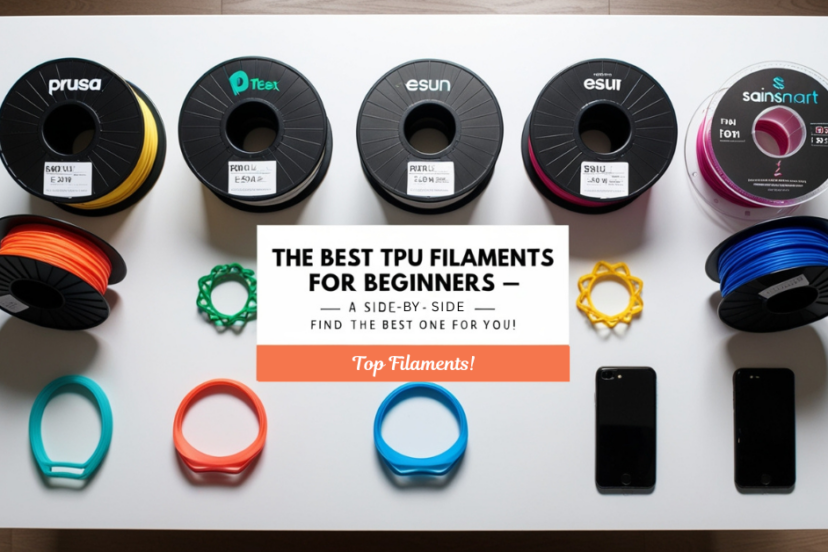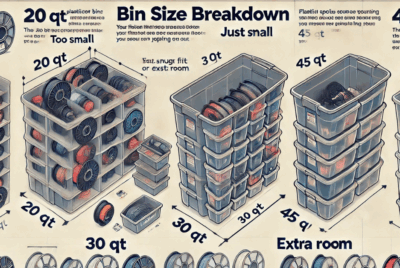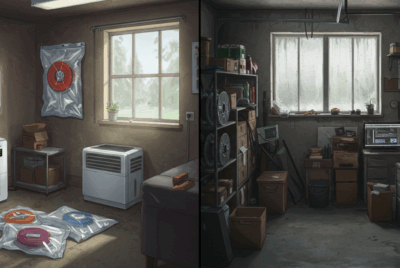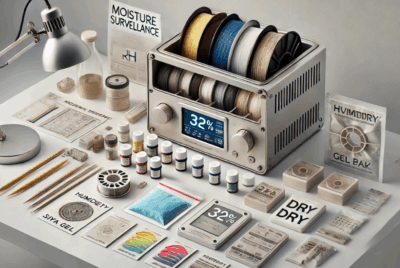What’s the best TPU filament for beginners?
When selecting TPU (Thermoplastic Polyurethane) filament for beginners, it’s essential to find a brand that is easy to print with, offers consistent quality, and has good printability characteristics. Since TPU is a flexible material that can be tricky to work with for those new to 3D printing, the best options will have a combination of good performance and forgiving printing properties.
Here are some of the best TPU filaments for beginners:
1. Prusa Flex (Prusa Research)
- Why It’s Great for Beginners:
- Prusa Flex is known for its high-quality and reliable prints, with good flexibility and ease of use.
- It has excellent adhesion to the print bed, which reduces the chances of warping and lifting.
- The filament is less prone to stringing and oozing compared to other TPU filaments.
- Printing Tips:
- Print temperature: 220°C to 230°C.
- Bed temperature: 50°C to 60°C.
- Use a slow printing speed, around 20-30mm/s.
- Benefit: This filament is designed to work well on a variety of 3D printers, and its quality control ensures consistency, which is crucial for beginners.
2. MatterHackers PRO TPU
- Why It’s Great for Beginners:
- MatterHackers PRO TPU is highly regarded for its ease of use and consistent extrusion, making it a solid choice for those new to flexible filament.
- It has a smooth, glossy finish and a high-quality feel, which makes it ideal for both functional and aesthetic prints.
- It has minimal stringing and warping issues, even at lower print speeds.
- Printing Tips:
- Print temperature: 220°C to 240°C.
- Bed temperature: 50°C to 60°C.
- Use a slower print speed to avoid clogging or under-extrusion (around 20mm/s).
- Benefit: PRO TPU is versatile and works well with many popular 3D printers, including those with direct drive extruders.
3. eSUN eTPU
- Why It’s Great for Beginners:
- eSUN’s eTPU filament is popular for its ease of use and affordability, making it a good option for beginners.
- It offers good layer adhesion and flexibility while printing consistently without too many issues.
- eSUN is known for its reliable quality control, which reduces the likelihood of poor prints due to filament inconsistency.
- Printing Tips:
- Print temperature: 210°C to 230°C.
- Bed temperature: 50°C to 60°C.
- Print speed: 20-30mm/s, depending on the model size.
- Benefit: eSUN’s eTPU has a broad compatibility range with both Bowden and direct drive extruders, which is helpful for beginners using different printer setups.
4. SainSmart TPU
- Why It’s Great for Beginners:
- SainSmart’s TPU is known for its consistent quality and ease of printing. It is flexible yet durable and is available in a variety of colors.
- The filament is less prone to jamming and is fairly forgiving for beginners.
- It is highly compatible with both direct drive and Bowden extruders, providing flexibility for different printer setups.
- Printing Tips:
- Print temperature: 220°C to 230°C.
- Bed temperature: 50°C to 60°C.
- Use a slower print speed, around 20mm/s for better control.
- Benefit: SainSmart TPU is a popular choice because of its good balance between flexibility and ease of printing, making it an excellent option for newcomers.
5. Amazon Basics TPU
- Why It’s Great for Beginners:
- Amazon Basics TPU is a budget-friendly filament that doesn’t compromise on quality, making it a great option for beginners who are just getting started with flexible filaments.
- It’s easy to work with and generally prints well without requiring a lot of adjustments.
- Printing Tips:
- Print temperature: 220°C to 230°C.
- Bed temperature: 50°C to 60°C.
- Print speed: 20-30mm/s.
- Benefit: Amazon Basics offers an affordable option for beginners who want to experiment with TPU without a significant investment.
6. Filamentum Flexfill 98A
- Why It’s Great for Beginners:
- Filamentum Flexfill 98A is known for its excellent quality and smooth printing experience.
- It offers a good balance of flexibility and ease of use, with low warping and minimal stringing.
- The filament comes with high-quality color options and has a smooth, glossy finish after printing.
- Printing Tips:
- Print temperature: 220°C to 240°C.
- Bed temperature: 50°C to 60°C.
- Print speed: 20-30mm/s.
- Benefit: This filament is great for printing soft parts such as gaskets, seals, and flexible prototypes.
General TPU Printing Tips for Beginners:
- Use a Direct Drive Extruder: TPU works best with a direct drive extruder, which has less friction and offers better control for flexible filaments. If you have a Bowden setup, you may need to adjust your retraction settings and use a slower print speed to avoid jams.
- Slow Printing Speed: TPU requires slower print speeds compared to other filaments. 20-30mm/s is generally recommended.
- Print Temperature: TPU generally prints best at temperatures between 210°C to 230°C.
- Retraction Settings: Use a shorter retraction distance (around 1mm to 3mm) to prevent the filament from buckling and causing jams.
- Use a Heated Bed: Set the bed to around 50°C to 60°C to ensure good adhesion and minimize warping.
Summary:
For beginners, Prusa Flex, MatterHackers PRO TPU, and eSUN eTPU are some of the best TPU filament options, offering ease of use, reliable printing, and good quality results. These filaments are forgiving, produce minimal stringing, and are compatible with a wide range of 3D printers. Make sure to use the right settings, particularly with retraction and print speed, to achieve the best print quality with TPU.




